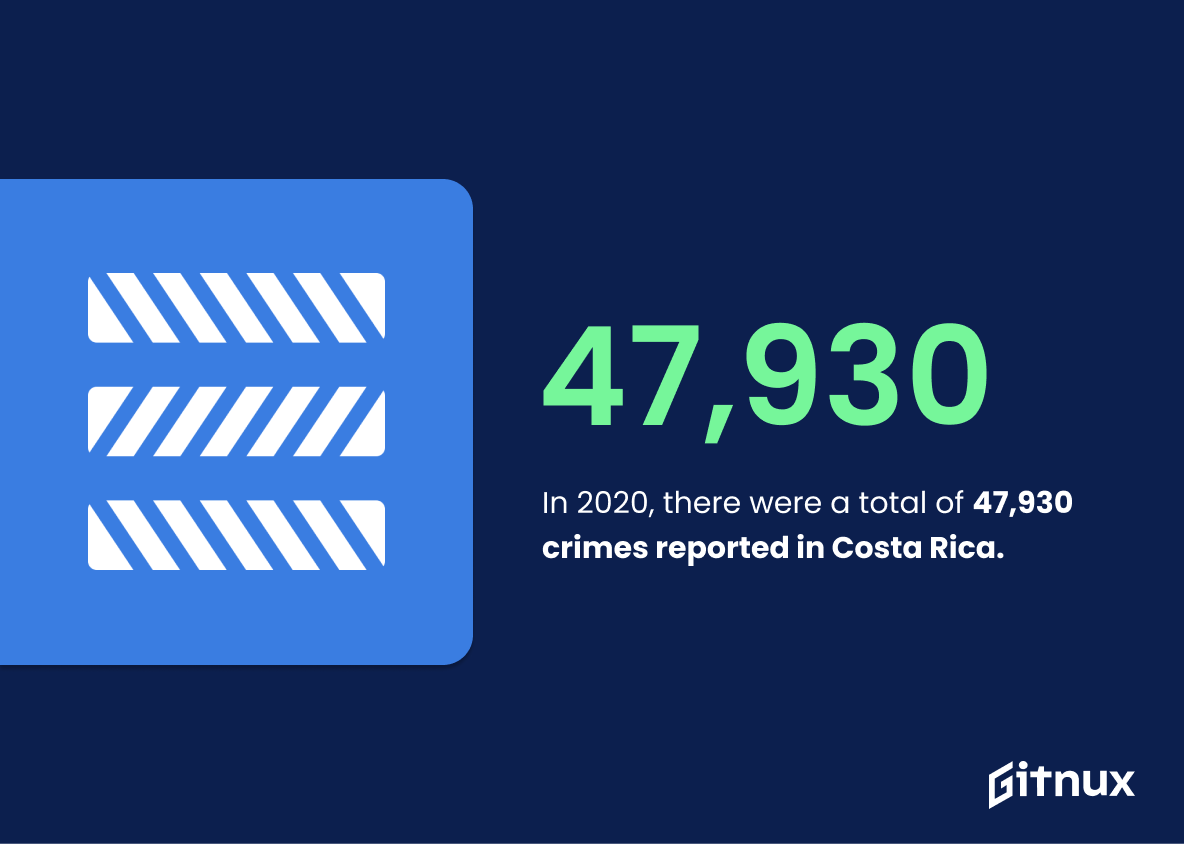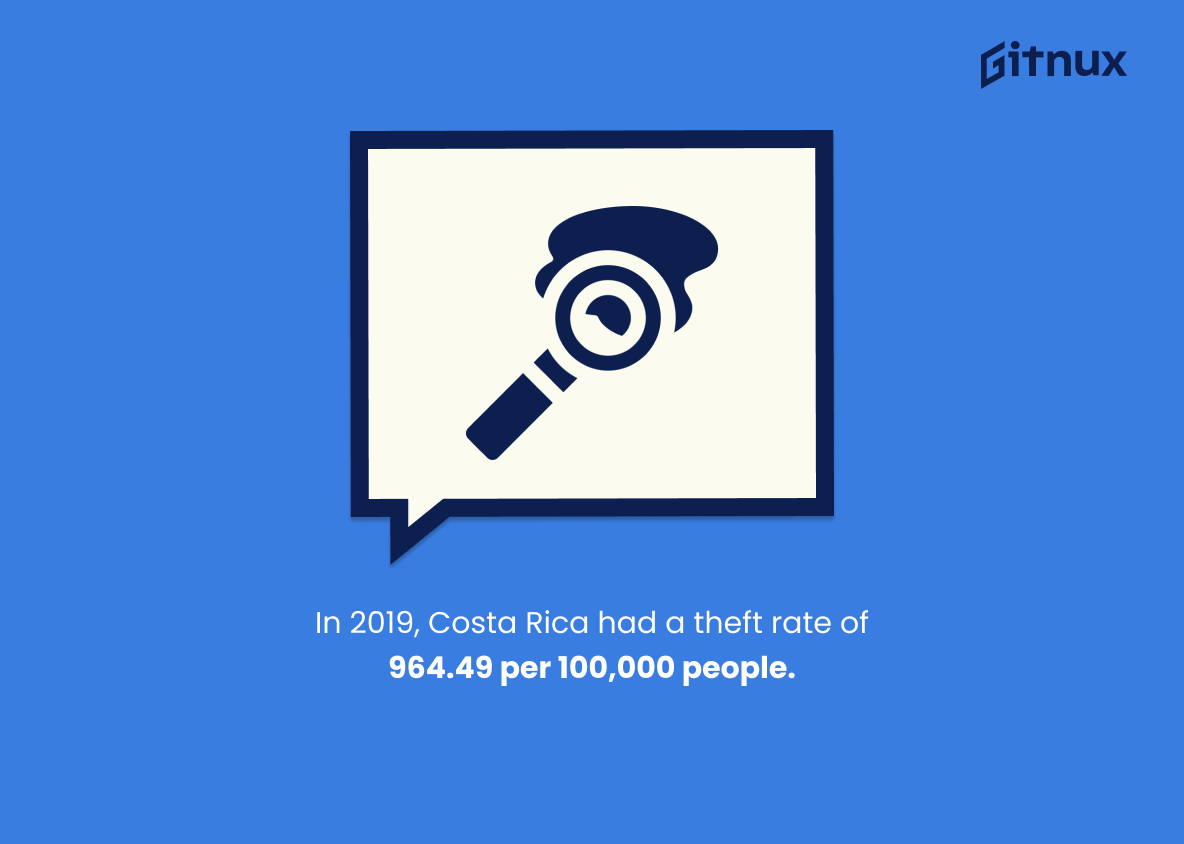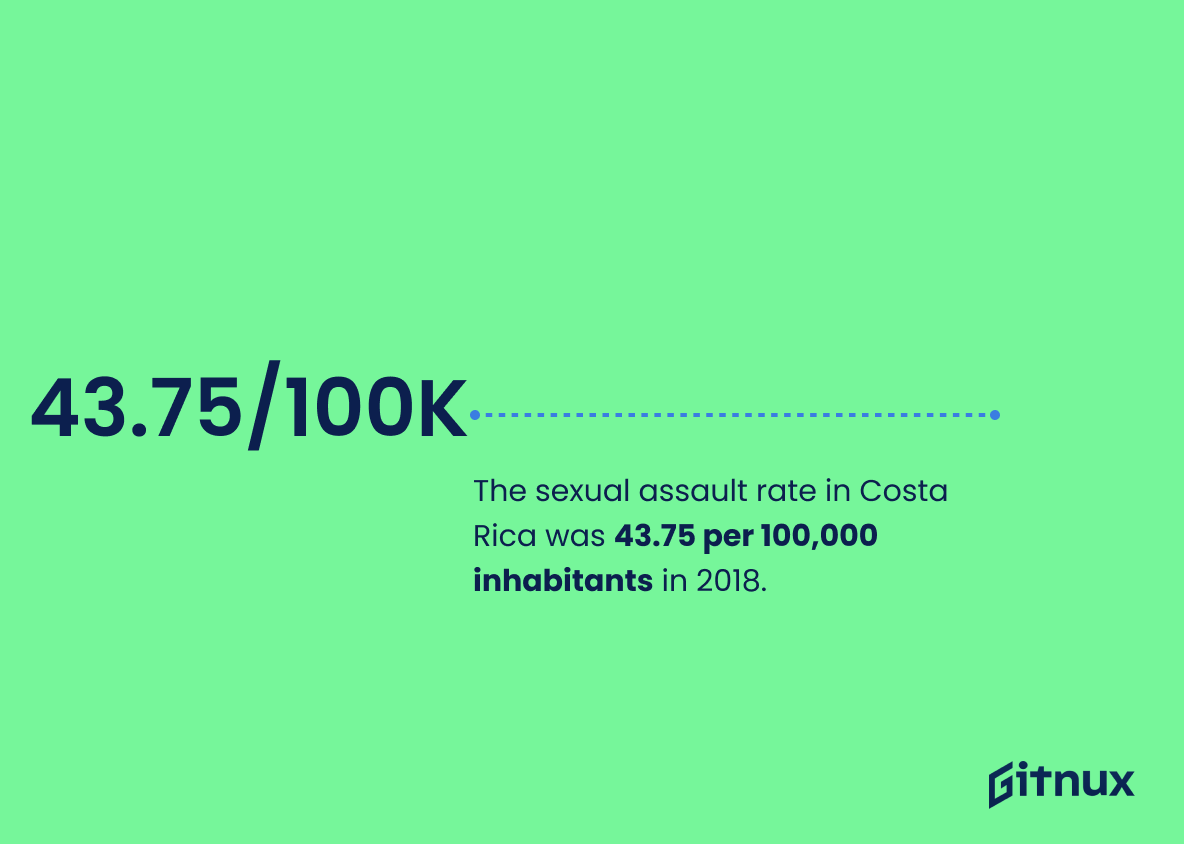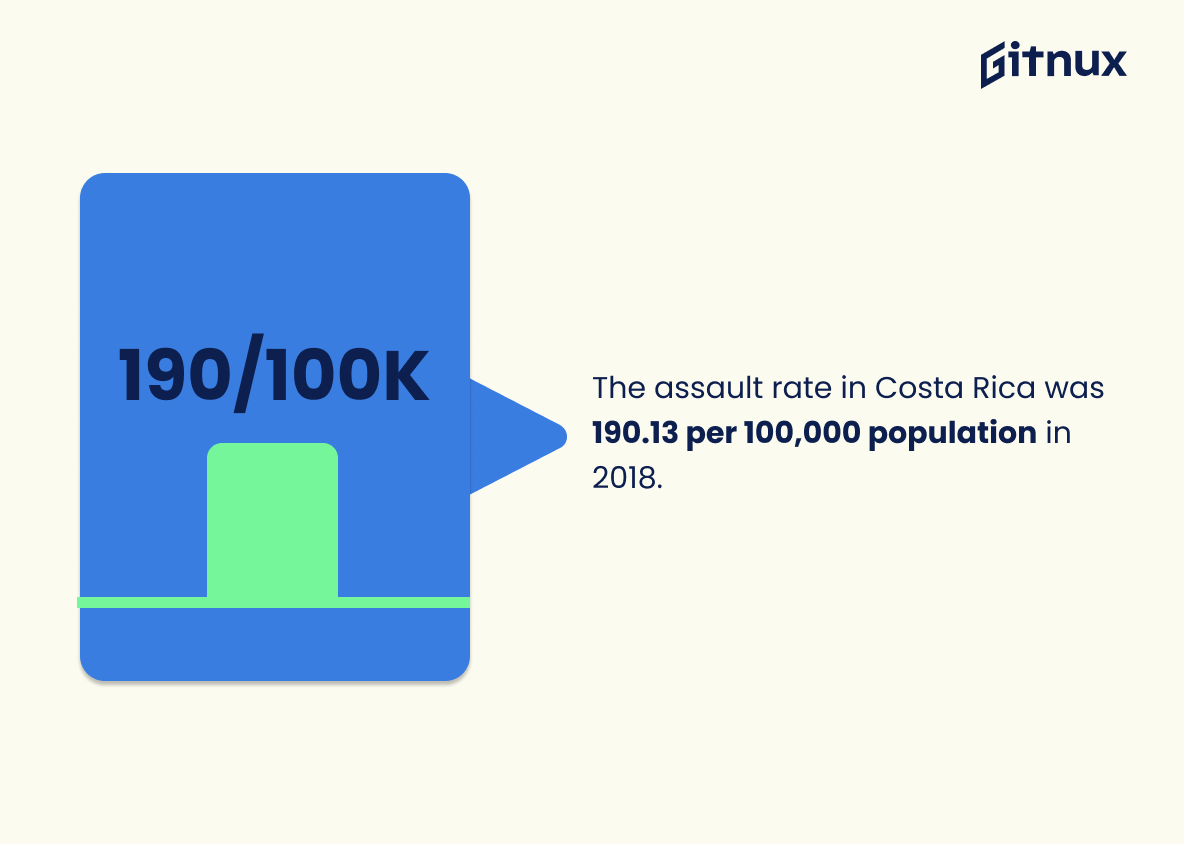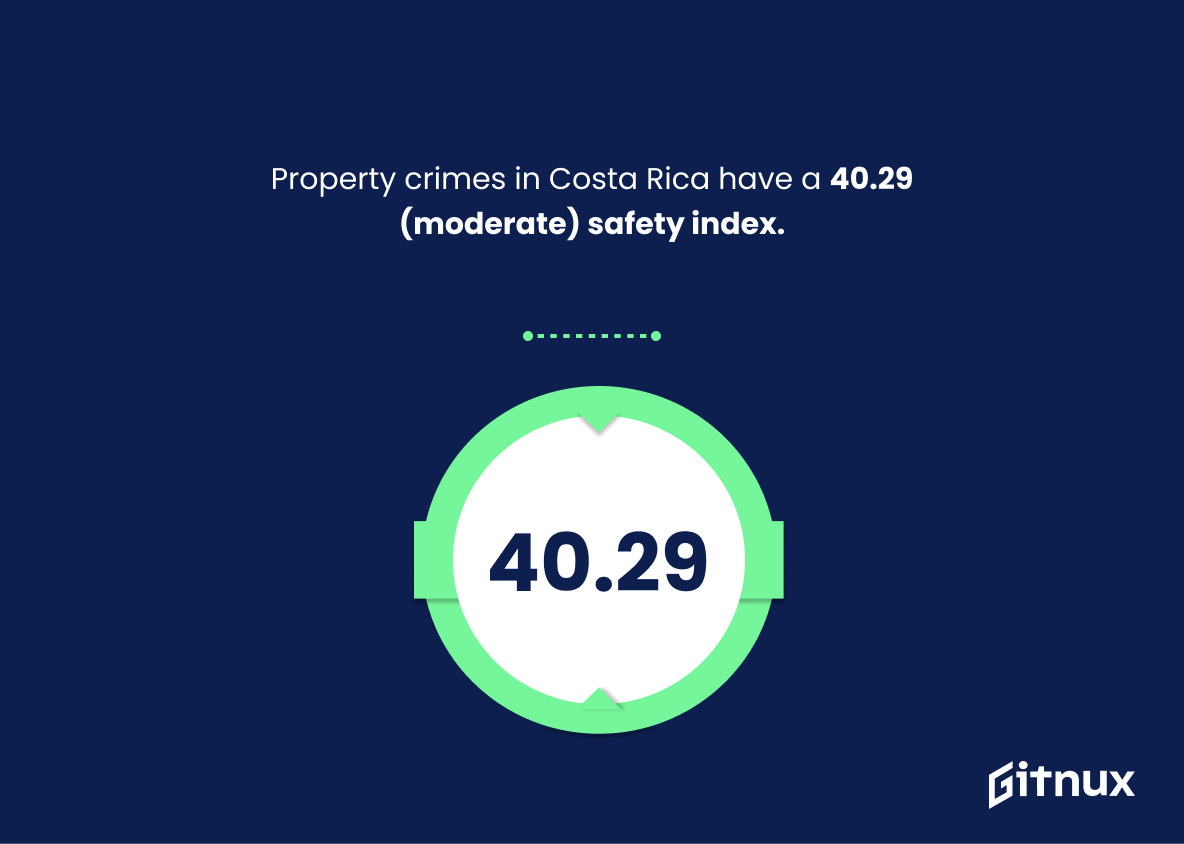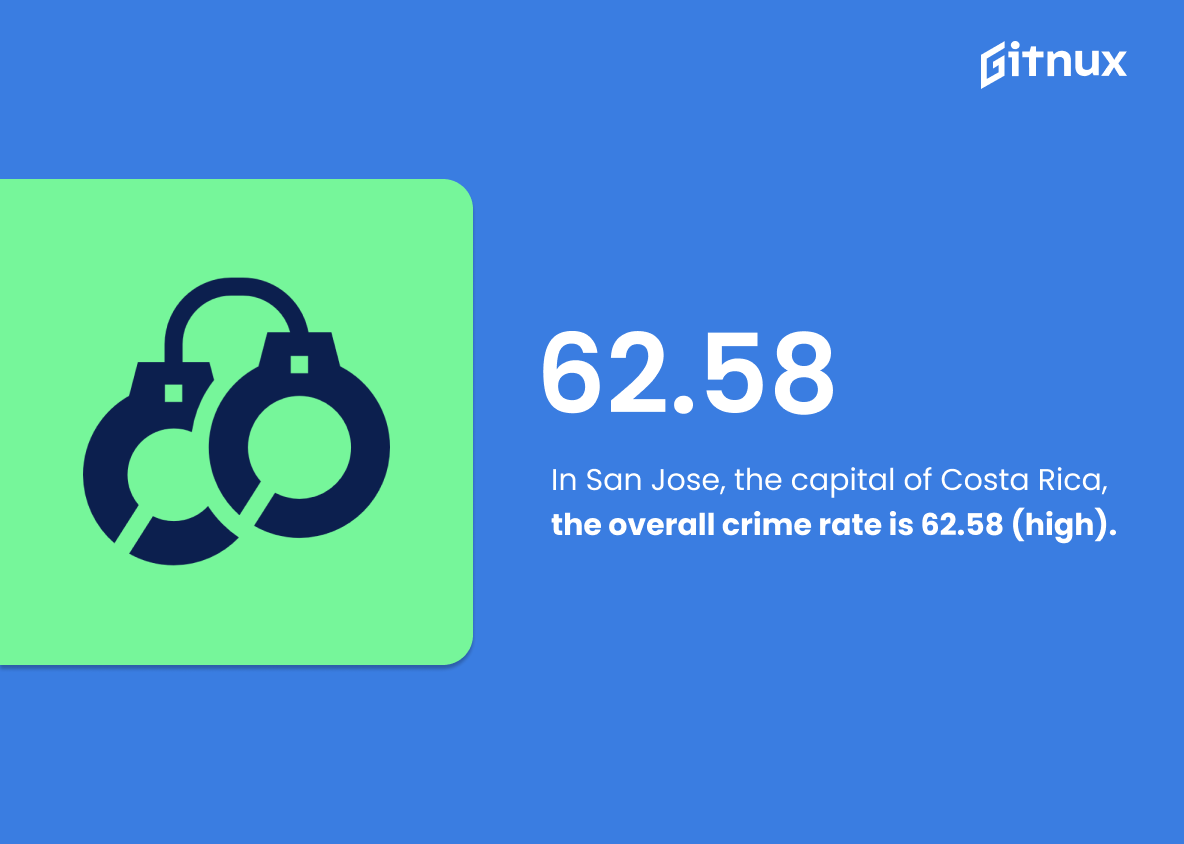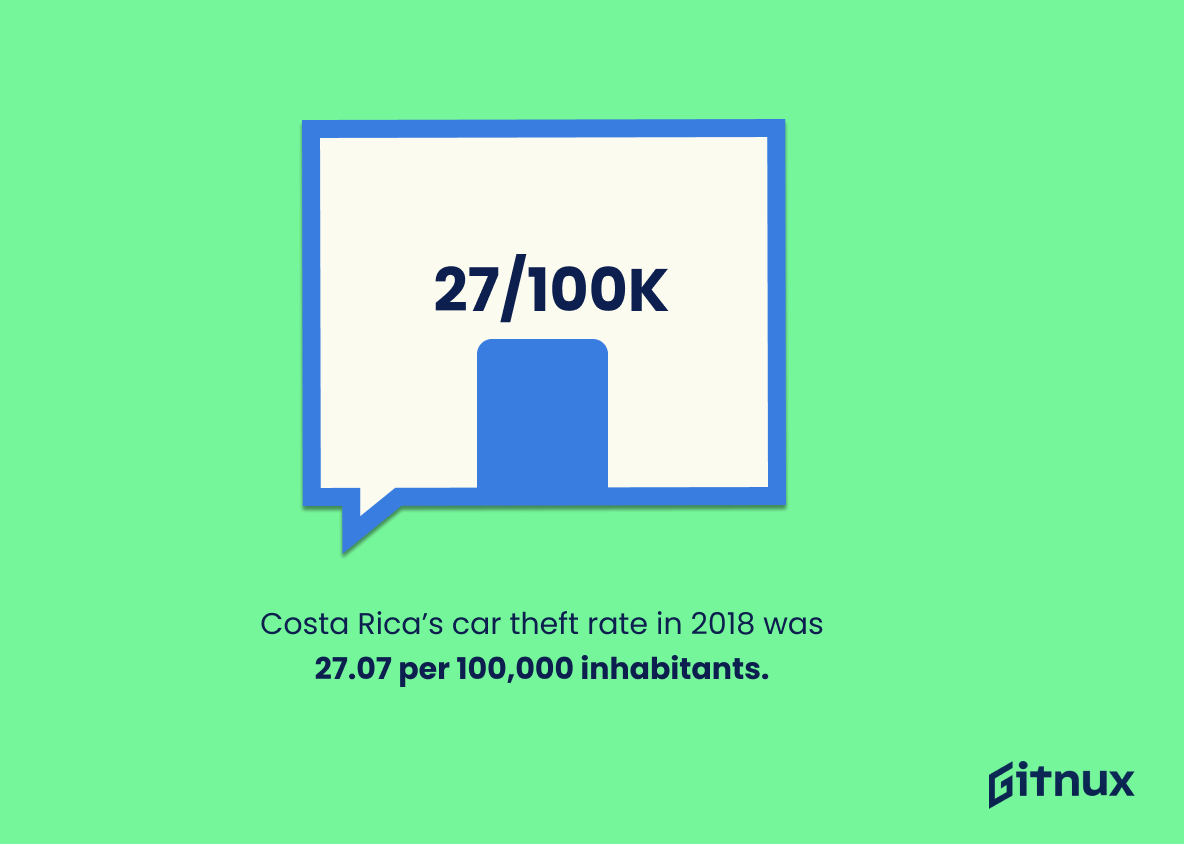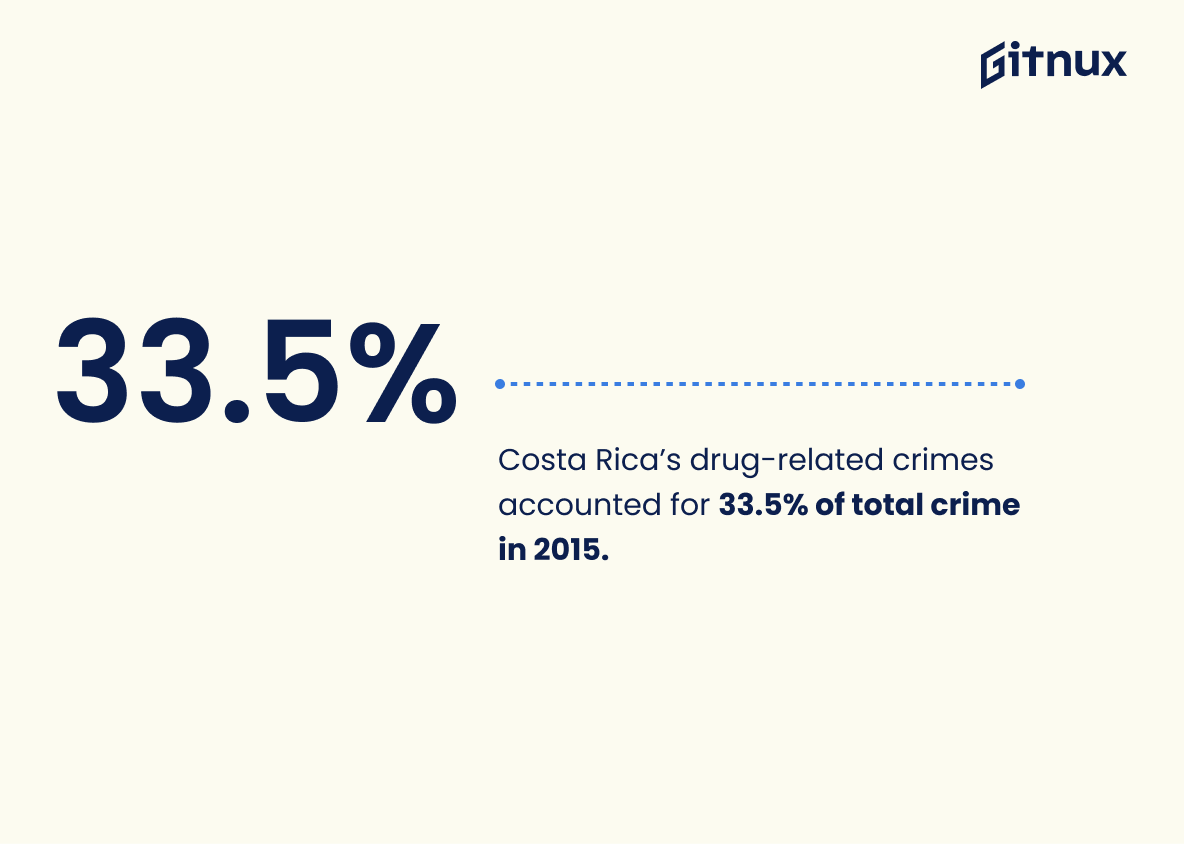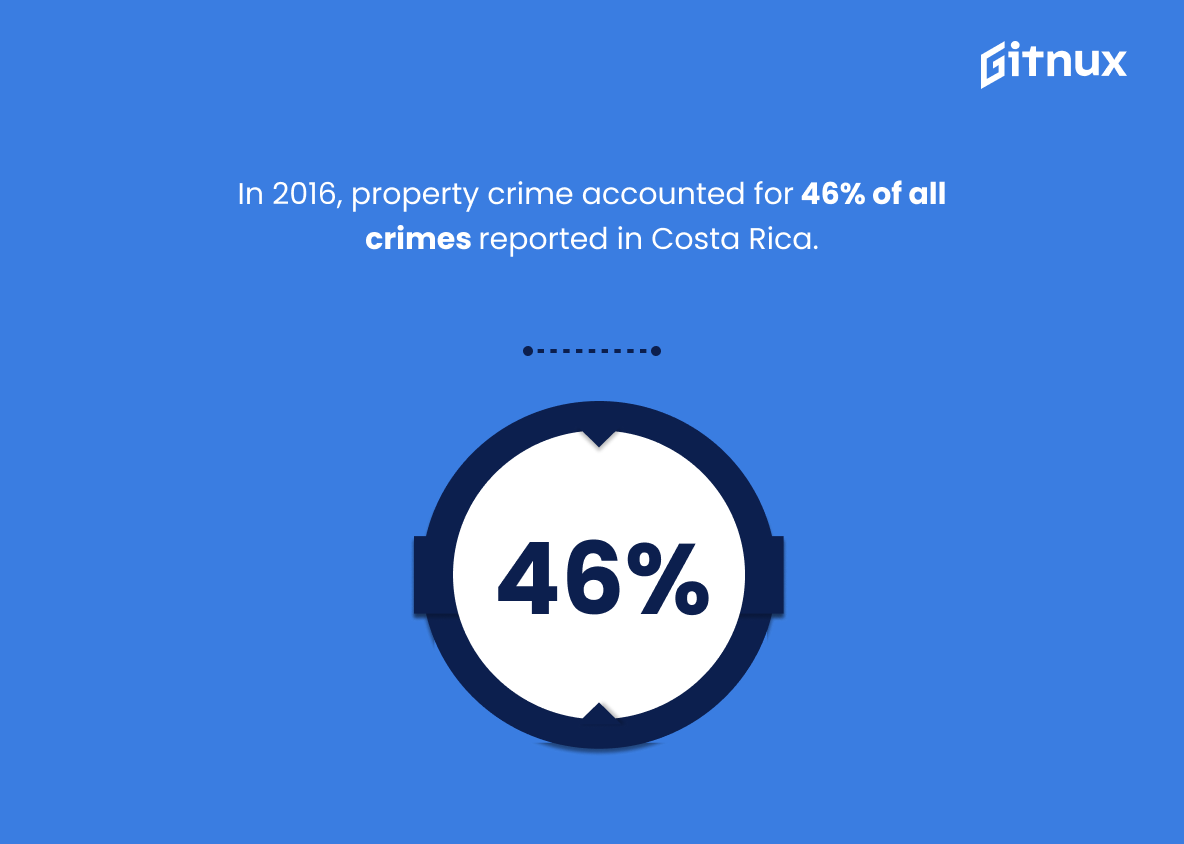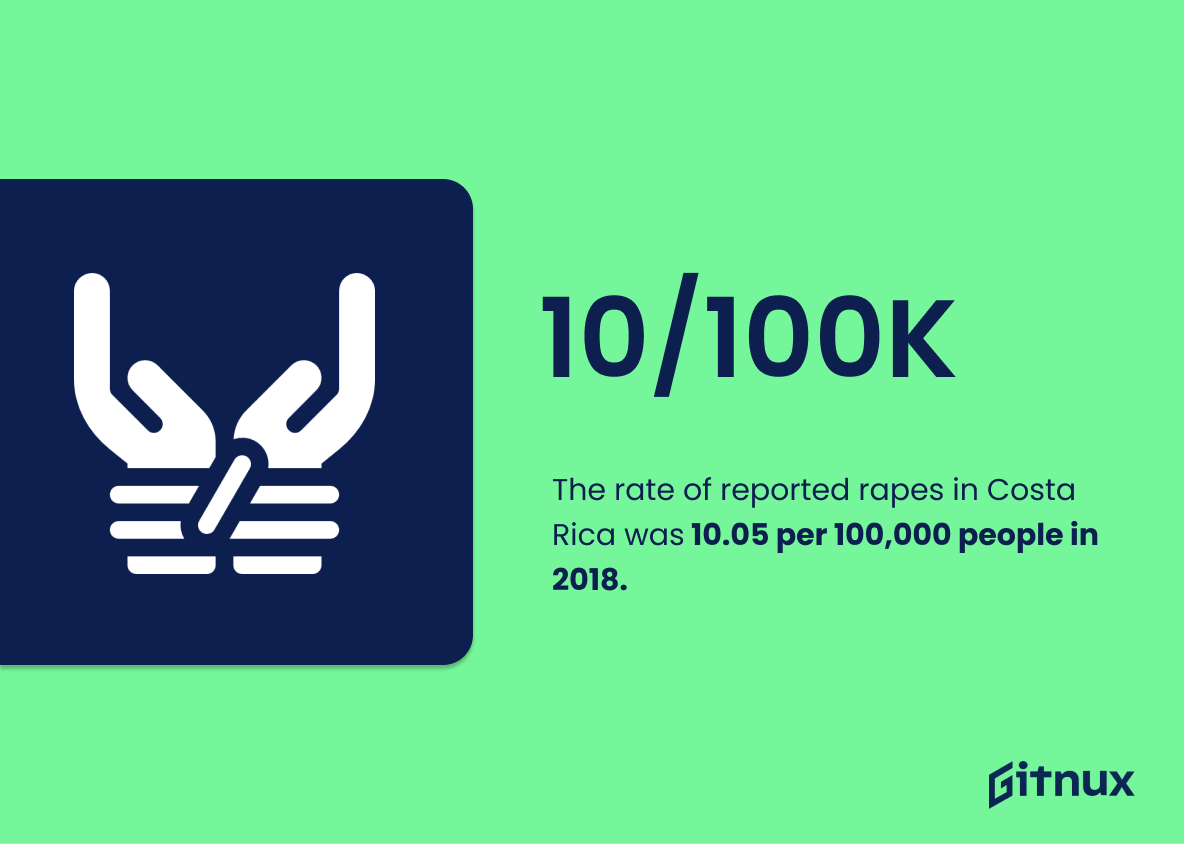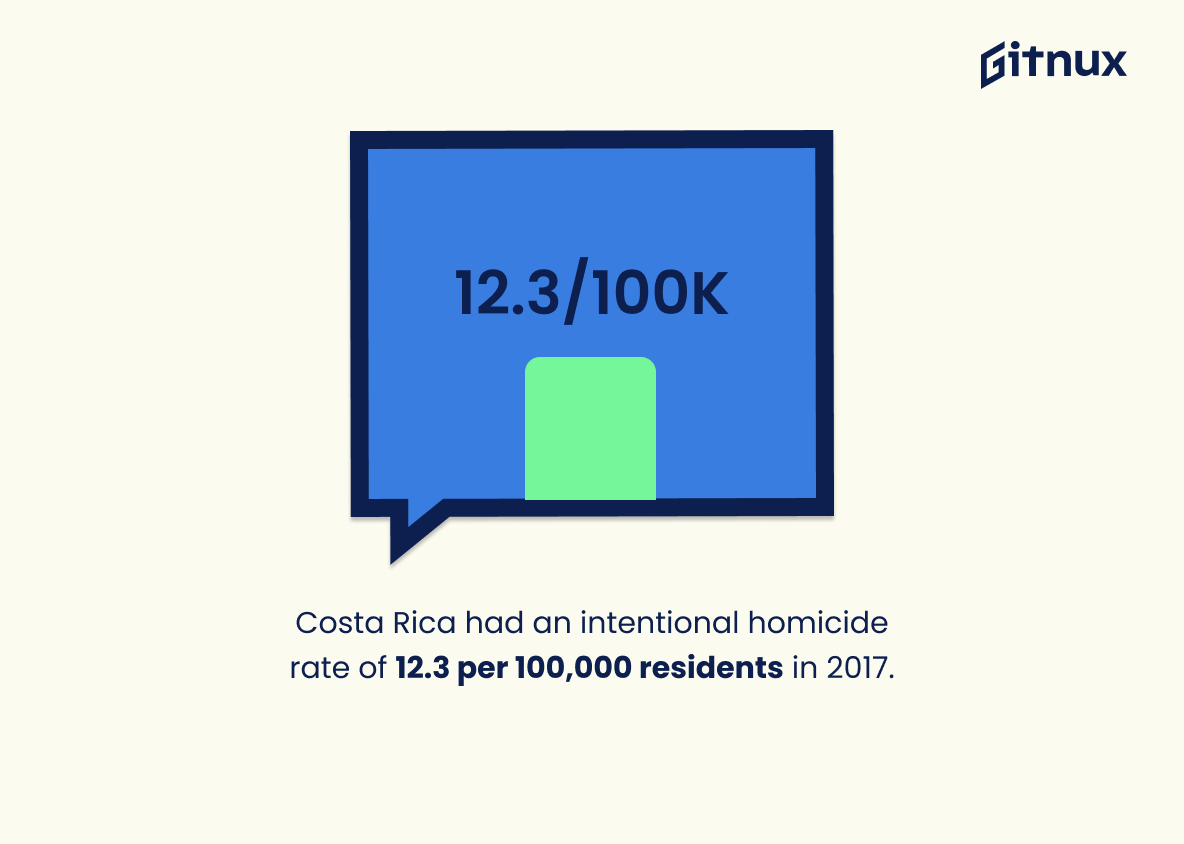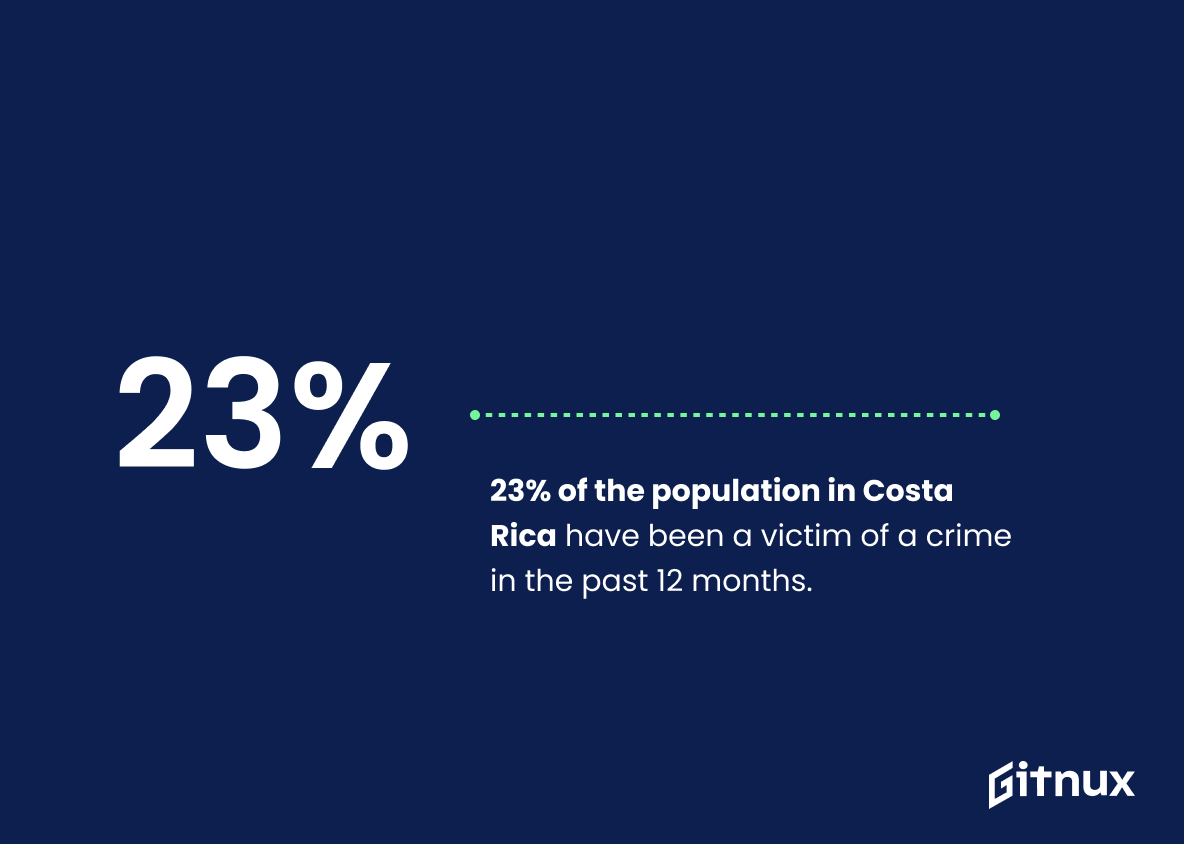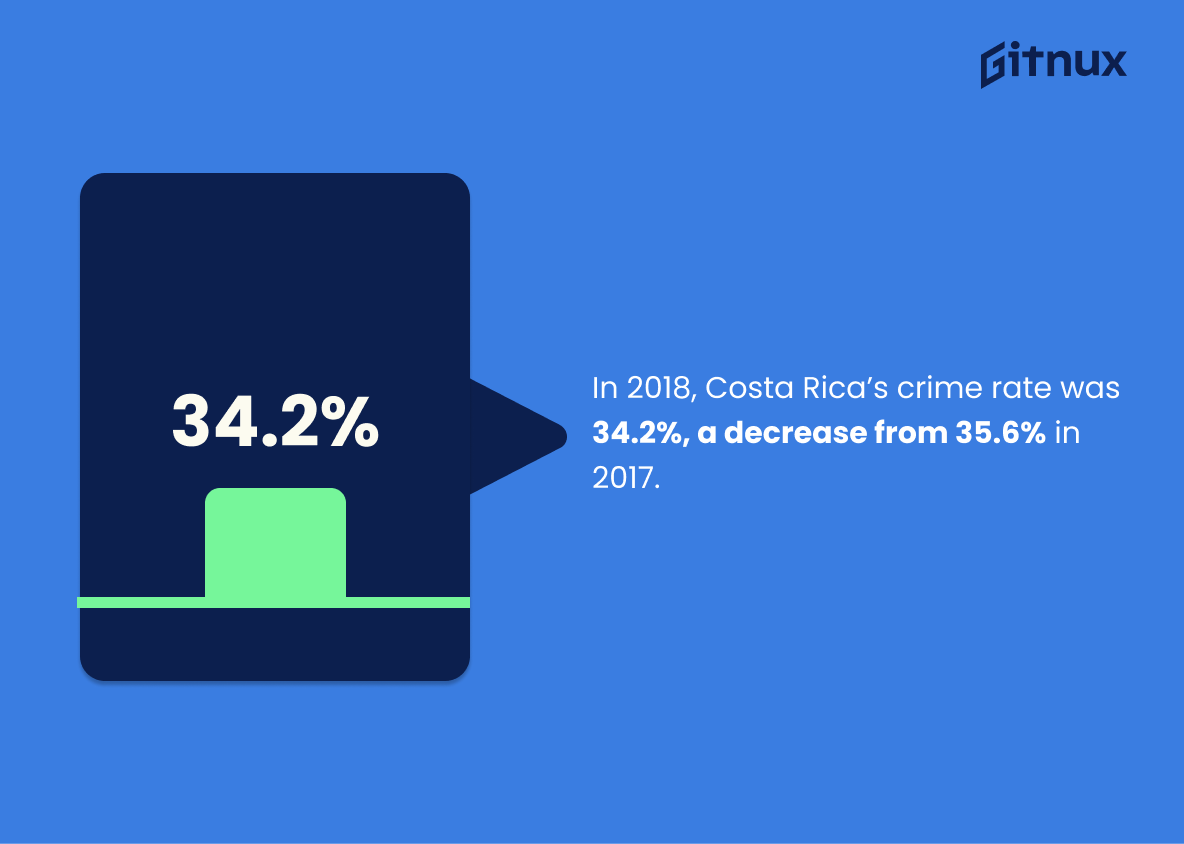Welcome to our blog post about Costa Rica’s crime rate statistics. In this article, we will be discussing the latest data on various types of crimes in Costa Rica. We’ll look at homicide rates, overall crime rates, robbery and theft rates, sexual assault and assault rates, property crime safety index scores for different cities in the country as well as car theft and drug-related crimes. Additionally, we will also discuss reported burglaries and rapes along with intentional homicides over a period of time from 2017 to 2019. Finally we’ll take a look at how many people have been victims of a crime within the past 12 months in Costa Rica. So let’s dive right into it.
The statistic of 11.7 homicides per 100,000 residents in Costa Rica in 2019 is a telling indication of the country’s crime rate. It serves as a reminder that, despite its reputation as a peaceful and safe destination, Costa Rica is not immune to the dangers of crime. This statistic is an important factor to consider when discussing the overall crime rate in Costa Rica.
The overall crime rate in Costa Rica is 48.79 (moderate).
This statistic is a crucial indicator of the safety of Costa Rica, providing a snapshot of the overall crime rate in the country. It is essential to consider when discussing Costa Rica’s crime rate statistics, as it gives readers an idea of the level of criminal activity in the country.
Costa Rica Crime Rate Statistics Overview
In 2020, there were a total of 47,930 crimes reported in Costa Rica.
This statistic is a telling indication of the state of crime in Costa Rica. It provides a snapshot of the number of crimes reported in the country in 2020, giving readers an idea of the prevalence of criminal activity in the region. It is an important piece of information to consider when discussing Costa Rica’s crime rate statistics.
In 2019, Costa Rica had a theft rate of 964.49 per 100,000 people.
This statistic is a telling indicator of the level of theft in Costa Rica in 2019. It provides a snapshot of the prevalence of theft in the country, and serves as a benchmark for comparison with other years and other countries. It is an important piece of information for anyone looking to gain an understanding of the crime rate in Costa Rica.
The sexual assault rate in Costa Rica was 43.75 per 100,000 inhabitants in 2018.
This statistic is a stark reminder of the prevalence of sexual assault in Costa Rica, highlighting the need for increased awareness and prevention efforts. It is a sobering reminder that, despite the country’s overall low crime rate, sexual assault is still a serious issue that needs to be addressed.
The assault rate in Costa Rica was 190.13 per 100,000 population in 2018.
The assault rate in Costa Rica in 2018 paints a vivid picture of the country’s crime rate, providing a valuable insight into the safety of the nation. This statistic is an important indicator of the security of the country, and is essential to understanding the overall crime rate in Costa Rica.
Property crimes in Costa Rica have a 40.29 (moderate) safety index.
The statistic of a 40.29 safety index for property crimes in Costa Rica is a telling indication of the overall security of the country. It serves as a reminder that, while Costa Rica is generally a safe place to visit, it is still important to be aware of the potential risks associated with crime. This statistic is a valuable insight into the crime rate in Costa Rica, and is an important factor to consider when researching the country’s safety.
In San Jose, the capital of Costa Rica, the overall crime rate is 62.58 (high).
The fact that the overall crime rate in San Jose, the capital of Costa Rica, is 62.58 is a stark reminder of the reality of crime in the country. It serves as a warning to those considering visiting or living in Costa Rica that they should be aware of the potential risks associated with the area. This statistic is an important piece of information to consider when discussing Costa Rica’s crime rate statistics.
Costa Rica’s car theft rate in 2018 was 27.07 per 100,000 inhabitants.
The statistic of Costa Rica’s car theft rate in 2018 is a telling indicator of the overall crime rate in the country. It provides a snapshot of the security situation in Costa Rica, and serves as a warning to those considering visiting or living in the country. By understanding the car theft rate, one can gain insight into the safety of the country and make informed decisions about their travels.
Costa Rica’s drug-related crimes accounted for 33.5% of total crime in 2015.
This statistic is a telling indication of the prevalence of drug-related crime in Costa Rica in 2015. It highlights the need for further investigation into the causes of this type of crime and the implementation of measures to reduce it. It also serves as a warning to those considering visiting Costa Rica, as it demonstrates the potential risks associated with drug-related crime.
In 2018, Costa Rica recorded 586 murders.
This statistic is a stark reminder of the reality of crime in Costa Rica. It serves as a reminder that crime is a serious issue in the country and that it is important to be aware of the risks and take steps to protect oneself. It also serves as a call to action for the government to take steps to reduce the number of murders and make Costa Rica a safer place to live.
In 2016, property crime accounted for 46% of all crimes reported in Costa Rica.
This statistic is a telling indication of the prevalence of property crime in Costa Rica. It serves as a stark reminder that, despite the country’s reputation for being a safe and peaceful destination, property crime is still a major issue that needs to be addressed. This statistic is an important piece of the puzzle when it comes to understanding the crime rate in Costa Rica and should not be overlooked.
The rate of reported rapes in Costa Rica was 10.05 per 100,000 people in 2018.
This statistic is a telling indicator of the safety of Costa Rica, as it provides insight into the prevalence of rape in the country. It is an important piece of information to consider when discussing the crime rate in Costa Rica, as it can help to inform readers of the potential risks they may face when visiting or living in the country.
Costa Rica had an intentional homicide rate of 12.3 per 100,000 residents in 2017.
The statistic of Costa Rica’s intentional homicide rate of 12.3 per 100,000 residents in 2017 is a crucial indicator of the country’s overall safety. It provides a clear picture of the level of violence in the country and how it has changed over time. This information is essential for anyone considering visiting or living in Costa Rica, as it can help them make an informed decision about their safety.
23% of the population in Costa Rica have been a victim of a crime in the past 12 months.
This statistic is a stark reminder of the prevalence of crime in Costa Rica, highlighting the need for increased security measures and improved safety for citizens. It is a crucial piece of information to consider when discussing the crime rate in Costa Rica, as it provides a tangible example of the impact of crime on the population.
In 2018, Costa Rica’s crime rate was 34.2%, a decrease from 35.6% in 2017.
This statistic is a testament to the progress Costa Rica has made in reducing its crime rate. It shows that the country is taking steps to ensure the safety of its citizens and visitors, and that the efforts are paying off. This is an encouraging sign for those considering a trip to Costa Rica, as it indicates that the country is becoming a safer place to visit.
Conclusion
Based on the statistics provided, it is clear that Costa Rica has seen a decrease in crime rates over the past few years. In 2019, homicide rate was 11.7 per 100,000 residents and overall crime rate was 48.79 (moderate). There were 47,930 crimes reported in 2020 with robbery rate of 334.12 per 100,000 population and theft rate of 964.49 per 100 000 people respectively in 2018 and 2019 respectively; sexual assault 43.75 per 100 000 inhabitants also recorded for 2018 while property crimes had 40.29 safety index same year as well as San Jose having 62 58 high overall crime rate same year too.
Car theft 27 07 per100 000 inhabitants , drug related 33 5 % total crime 2015 , 586 murders 2018 , 10 38 burglaries 1000 resident 2017 45% violent committed by known victims 2016 46 % all crimes reported property 2016 rape 10 05 2018 intentional homicide 12 3 2017 34 2 %crime drop 35 62017 60% kidnappings first six months 2019 compared to previous year are some other important stats about costa rica’s criminal activities which shows there have been significant decreases over time.
References
0. – https://www.indexmundi.com
1. – https://www.data.worldbank.org
2. – https://www.laenderdaten.de
3. – https://www.datosmacro.expansion.com
4. – https://www.one.nhtsa.gov
5. – https://www.thecostaricanews.com
6. – https://www.countryeconomy.com
7. – https://www.insightcrime.org
8. – https://www.numbeo.com
9. – https://www.amcostarica.com
10. – https://www.osac.gov
11. – https://www.statista.com
